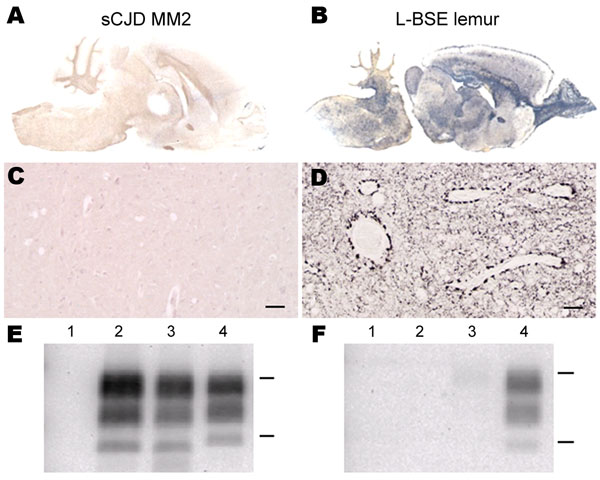Volume 18, Number 12—December 2012
Dispatch
Differentiation of Prions from L-type BSE versus Sporadic Creutzfeldt-Jakob Disease
Figure 1

Figure 1. . . . Susceptibility of Syrian golden hamsters to MM2-cortical subtype sporadic Creutzfeldt-Jakob disease (sCJD) and L-type bovine spongiform encephalopathy (L-BSE) prions. Disease-associated prion protein (PrPd) was analyzed in brains of hamsters injected with human MM2-cortical sCJD and L-BSE from a mouse lemur by paraffin-embedded tissue blot (A, B), immunohistochemistry (C, D), or Western blot (E, F). Monoclonal antibodies against prion protein were SAF84 (A–D), SHa31 (E), and 12B2 (F). C, D) Scale bars = 200 µm. E, F) Controls were hamsters infected with L-BSE from cattle (isolate 02-2528) and with scrapie (experimental isolate SSBP/1 after a first passage in ovine prion protein–transgenic mice). Lane 1, sCJD MM2; lane 2, L-BSE from lemur; lane 3, L-BSE from cattle control; lane 4, scrapie control. Bars to the right indicate the 29.0- and 20.1-kDa marker positions.